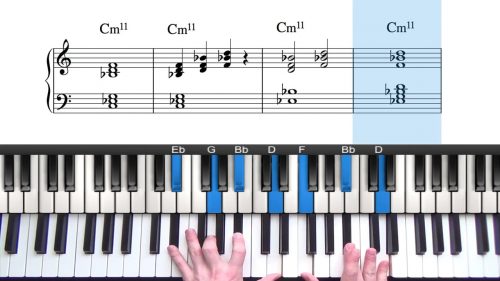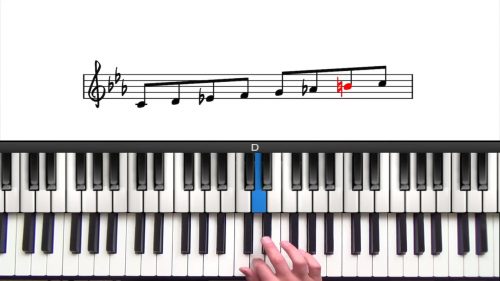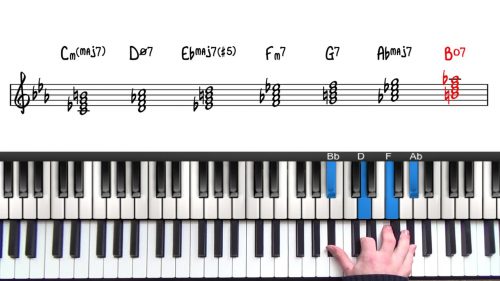Minor Harmony Recap
In this lesson we explore the 3 different minor scales and how and why they are used in jazz harmony, and jazz improvisation. “In A Sentimental Mood” is written in the key of D Minor and the tune modules to the key of Db Major for the bridge, or the B Section.
We will start by exploring the key of D minor, the different minor scales, and the common progressions that we can build in minor keys.
The 3 Minor Scales
Whilst we just have one major scale, there are 3 types of minor scale: the natural minor scale, the harmonic minor scale, and the melodic minor scale. Let’s talk about these 3 scales in the key of D.
We start with the natural minor scale which is also known as the relative minor scale. It has this name because it shares the exact same notes as its relative major scale which starts a minor 3rd above.
Now it’s the other 2 minor scales – the melodic minor and the harmonic minor – which are essential for creating harmonies and improvised melodies in minor keys.
Harmonic Minor Diatonic 7th Chords
We explore the diatonic 7th chords of the D harmonic minor scale. We start with the root in our left hand and the 7th chords in root position in our right hand, and then introduce 2 handed spread voicings.
Now that we have identified the diatonic 7th chords we can build the minor 251 progression. The 2 chord is E-7b5, the 5 chord is A7 usually with a b9, and the 1 chord is D-maj7.
In lesson 2 of our introduction module we will explore the modulation to Db in the bridge and also the harmonic frame work of the B Section.
Practice Tips
-
To find harmonic minor scale we raise the 7th note of the natural minor scale by a half step. Notice that the scale now has a distinctive middle eastern flavour at the top.
-
To find the melodic minor scale we raise the 6th note of the harmonic minor scale by a half step which creates a slightly mysterious sounding scale that is used extensively in jazz improvisation.
-
It’s important to note that the 1 chord in minor keys can be played as a minor major 7 chord, a straight minor 7 chord, or even a minor 6 chord.
-
This tune follows an AABA form and so once we have memorised the A Section, we have actually memorised 75% of the tune.







What a lovely tune indeed to study minor chord harmony and improvisation! Thanks, Hayden.
Question, at the 9:36 time stamp on the video, while you demonstrate a voicing for a minor11b5 chord, the notation on the bass clef seems wrong, no? You are playing the root E and the b5 Bb in the left hand.
I notice in the right hand you are playing what amounts to a major triad upper structure a whole tone below the root of the chord, which gives you the b7, 9 and 11 but omits the minor third.
My mind likes these mental shortcuts for voicings, so I experimented in other keys, and it sounds nice.
Likewise, found it useful to see as you pointed out that a minor6 chord shares the same notes as a minor7b5 with the root a minor third below.
Thanks for the great lessons, including the new ear training exercises.
Hi Humberto 👋
Thanks for letting me know about the mistake in the notation, indeed the upper note in the left hand should be Bb and not D. I will correct this and re-upload the video file.
Yes the minor 11b5 voicing is really great and easy to remember, I think to myself “root and b5 in the left hand”, and then “a major triad off the 7th degree” which gives us minor 7, natural 9, and 11.
Another interesting point is that this exact voicings can also function as a rootless C13#11 or a rootless Gb7#5#9 (the tritone of C7). From studying the upper structure triad lessons you will start to recognise these shapes and how they can function in other harmonic situations.
I’m glad you are enjoying the ear training section. I have the new explainer videos on my to-do-list which will be a tour of the ear training section and also the forum features as you suggested, and I will add these videos to the ‘website tour/orientation’ course.
Cheers and talk soon!
Hayden
Hayden, thanks for your quick reply and good learning point about the rootless voicings